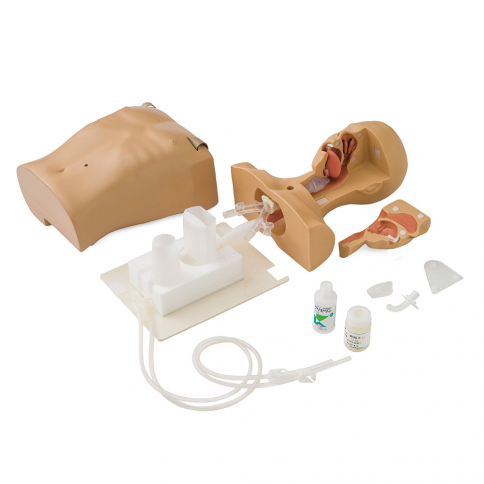

Actual administration of feeding involves gathering the proper equipment, supplies, formula and ensuring delivery method/rate according to the order (Lippincott, Williams & Wilkins, 2015). The type of formula should be confirmed according to patient’s needs and medical conditions. A feeding order should include the patient’s identification information, type of formula, delivery device, method and rate (Bourgault, Heath, Hooper, Sole, & NeSmith).

There are situations when the diet order may change frequently and if the order is not verified prior to administration, formula may be administered incorrectly. It is vital to confirm the provider’s nutrition/diet order prior to providing the patient enteral nutrition. (Bourgault, Heath, Hooper, Sole, & NeSmith).

Remember feeding tubes can coil in the stomach and/or esophagus so the exit mark and/or exit number do not confirm definitive placement. If numbers are pre-printed on the tube, it is important to document the exit mark number. Once placement is confirmed, it is helpful to mark the exit spot with a permanent marker or piece of tape. This aspirate can be tested for pH a gastric pH is normally less than 5 (Lippincott, Williams & Wilkins, 2015). It is also possible to check an aspirate by injecting 5 to 10 ml of air into the feeding tube and then slowly pulling back an aspirate sample. Cuffed endotracheal tubes and/or cuffed tracheostomy tubes do not prevent feeding tubes from being placed in the lungs. When the tube placement is in question the patient needs an x-ray to verify placement (Lippincott, Williams & Wilkins, 2015). If the tube has been inadvertently placed into the lungs, feeding may result in morbidity or mortality. Prior to the initiation of feeds, tube placement should be confirmed. Unique needs are important considerations when initiation and/or continuing feeds. A pre- or post-operative patient may have mobility restrictions that may require him/her to remain flat (Lippincott, Williams & Wilkins, 2015). A patient’s medical condition can directly affect the ideal positioning. The nurse may consider positioning aides to help maintain a safe feeding position. A patient’s age and/or developmental level may impact his/her ability to understand the need to remain in a particular position for feeding (Lippincott, Williams & Wilkins, 2015). Interruption of feeds for long periods and/or frequent interruptions can negatively impact the patient’s nutrition (Lippincott, Williams & Wilkins, 2015).

However, it is is of great importance to monitor the amount of time a patient’s feeds are paused for care or intervention. If the patient’s head of bed needs to be lowered for patient care or an intervention, pausing feeds will help prevent aspiration (Stewart, 2014). Keeping the head of bed (HOB) elevated at least to 30 degrees (45 degree is ideal) helps prevent gastric reflux that increases the risk for aspiration (Stewart, 2014). Patient positioning can help facilitate gastric emptying and prevent aspiration of feed due to gastric reflux. For children and infants the frail and elderly patients receiving enteral nutrition and/or on formula, it is important to ask questions related to feeding and formula intolerances. Although a nutritional screening is more comprehensive than a feeding history, the patient’s feeding history should be included in the nutritional screening in addition to the patient’s medical history, physical assessment, pertinent lab values as well as a malnutrition assessment. The importance of nutritional screening is to the point where the Joint Commission mandates every patient admitted to an acute care organization receive a nutritional screening within 24 hours of admission (Mauldin & O’Leary-Kelley, 2015). Many patients experience malnutrition at some point which can occur when a patient’s caloric intake does not meet the body’s metabolic demand. Nurses also are the ones who observe and notice when a patient is not tolerating tube feeding or when the patient is tolerating feeding and their feeding should be advanced to increase nutrition. It is the nurses however who independently administer the nutrition and ensure the process is delivered accurately. Multidisciplinary teams decide on a patient’s nutritional needs and write orders for formula feeding when a patient requires nutritional supplementation by alternative feeding device. Alarmingly, 60% of patients who receive nutrients through a tube will develop aspiration pneumonia (Megan, 2011). It is estimated that 345,000 people in America receive nutrients from tube feedings (Megan, 2011). Enteral feeds help maximize nutrition for patients in a variety of health care settings.


 0 kommentar(er)
0 kommentar(er)
